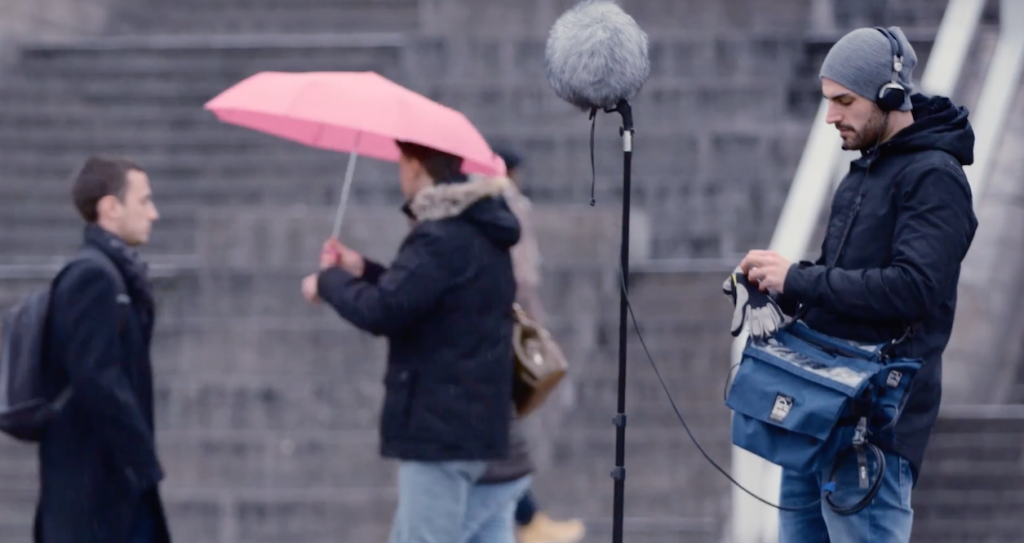A lot of times, people overlook the impact of the sound design and the aural intricacies that are employed in a movie. A large portion of the immersive experience that films provide is due to the sound design and the score.
A lesser known aspect of the post-production process is Foley, named after sound-effects artist Jack Foley, it is the reproduction or imitation of sounds that are depicted by the actions taking place or caused by the environment on-screen. These sounds are added to the visuals in the post-production stage, after the shooting has finished. Foley could range from recreating the sound of the breeze blowing to a creaking floorboard to the shattering of a glass bottle. The importance of adding these sounds will be truly realized only when you watch the video when it is not accompanied by the required sound effects. The dead silence often builds up a feeling of unrest and while this can be used to intentionally build up tension, in order to experience the ambience and the environment of the scenario on-screen, you will definitely need to have the corresponding sound effects. For example, a scene that is shot at a beach would feel incomplete if it isn’t accompanied by the sound of waves crashing against the shore.
In the case of high-budget productions, professional Foley artists whose focus is recreating these sounds are put to the job. What is extremely fascinating is that a lot of times the sounds that accompany a certain visual are created using completely unpredictable and strange techniques. For example, the sound that accompanies the visual of person walking on thick snow is often produced by recording the sound made by footsteps on small pile of sand in a studio. These techniques are named after sound effect artist, Jack Foley who worked on a number of Hollywood films, developing unique methods for performing sound effects live and in sync with the visuals.
While a lot of these sounds are recreated by using a different set of materials to produce suitable effects in a studio, sometimes the producers or film-makers prefer to have actual field recordings of the environment. A perfect example for this kind of a scenario would be a wildlife documentary. The ability to immerse a viewer, who might sitting in his apartment in Bangalore, to make him feel as though he is truly present at the scene, watching Antelope grazing through the Savannah is what it’s all about. The quality of these recordings and sound effects can be measured by the impression that they leave on an audience.
The field recording process is a bit more challenging than recording a sound effect inside a convenient, sound-treated studio. Based on the purpose and source of the sound that you’re trying to capture, your requirement in terms of equipment will also vary. One of the most important things that you need to keep in mind while field recording is that you need to hear exactly what you’re capturing, and as a result, headphones are indispensable. If the intended source of sound is at a distance in a specific direction, then shotgun mics are the way to go. These mics cancel out audio from the sides and the back, which results in an extremely directional pick-up pattern. If the desired source is more ambient and not directional, a combination of cardioid mics for stereo imaging or a stereo microphone itself can be used. Handheld recording devices from companies such as Zoom are also a good option in an affordable price bracket. While recording outdoors, one of the most common challenges is wind. Companies such as Rycote have developed windscreens that do an amazing job of drastically reducing wind noise in your recordings.
In today’s world, where we expect everything at the tips of our fingers, it would be foolish to not touch upon the convenience of pre-recorded sound effect packs. Available for cheap or in a lot of cases, for free, these packs have samples of most conventionally used sound effects such as creaking doors, breaking bottles or gunshots. You can also find more specific sounds if you spend enough time looking online. While these are easily available and ready to use, they often lack in quality, creativity and uniqueness, whereas the recordings made by Foley artists and field recordings are done to serve the purpose of providing a wholesome experience to the viewer/listener.
Another important factor is giving these sound effects an aural depth of perception and directionality. Whether you’re watching a film at a movie theatre, at your home audio system or on your headphones, stereo imaging plays a huge role in determining how your ears perceive the sounds and correlate it to the visuals. For example, a shot of someone running across a hall, from the left to the right, needs to be accompanied by footsteps with consequent panning. Effects like reverb and echo make a great deal of difference in defining the distance between the source of a sound and a listener as well as the environment in which the sound is produced in. A perfect example would be to pair a shot of someone walking towards the camera in large hall with the sound of faint footsteps drowned in a hall reverb. As the person get closer, the volume of the footsteps increase as the reverb decreases.
These techniques are not limited to films and videos but in a variety of other media such as video games and, obviously, music. In certain genres of music, portraying soundscapes plays a huge role. Electronic genres such as psychedelic trance heavily employ the use of field recordings and sound effects to establish trippy soundscapes. Instances such as Agalloch, a black metal band, tapping on a deer skull to create a beautiful and meditative percussive element on their track “The Lodge”, are proof of the results that can be achieved when these techniques are used with creativity.








